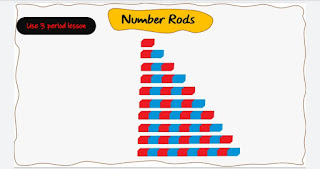Understanding Numbers 1-100
Math is all around the young child from day one. How old are you? In one hour you will go to school.
Number itself cannot be defined and understanding of number grows from experience with real objects but eventually they become abstract ideas. It is one of the most abstract concepts that the human mind has encountered. No physical aspects of objects can ever suggest the idea of number. The ability to count, to compute, and to use numerical relationships are among the most significant among human achievements. The concept of number is not the contribution of a single individual but is the product of a gradual, social evolution. The number system which has been created over thousands of years is an abstract invention. It began with the realization of one and then more than one. It is marvelous to see the readiness of the child’s understanding of this same concept.
Arithmetic deals with shape, space, numbers, and their relationships and attributes by the use of numbers and symbols. It is a study of the science of pattern and includes patterns of all kinds, such as numerical patterns, abstract patterns, patterns of shape and motion. In the Montessori classroom, five families with math are presented to the child: arithmetic, geometry, statistics and calculus. More precisely, the concepts covered in the Primary class are numeration, the decimal system, computation, the arithmetic tables, whole numbers, fractions, and positive numbers. We offer arithmetic to the child in the final two years of the first place of developments from age four to age five and six.
Arithmetic is the science of computing using positive real numbers. It is specifically the process of addition, subtraction, multiplication and division. The materials of the Primary Montessori classroom also present sensorial experiences in geometry and algebra.
Little children are naturally attracted to the science of number. Mathematics, like language, is the product of the human intellect.
It is therefore part of the nature of a human being. Mathematics arises form the human mind as it comes into contact with the world and as it contemplates the universe and the factors of time and space.
It under girds the effort of the human to understand the world in which he lives. All humans exhibit this mathematical propensity, even little children. It can therefore be said that human kind has a mathematical mind.
Montessori took this idea that the human has a mathematical mind from the French philosopher Pascal. Maria Montessori said that a mathematical mind was “a sort of mind which is built up with exactity.” The mathematical mind tends to estimate, needs to quantify, to see identity, similarity, difference, and patterns, to make order and sequence and to control error.
Understanding Numbers 1 to 100
Preschool is the building block of a child’s future pursuit. Once a child misses it, then it becomes difficult to correct it.Many of us don’t like mathematics not because the subject is hard but because we had teachers who made the subject difficult.
The best time to prepare a child for mathematics is in the second trimester of pregnancy and the second best time is after delivery.
You will be wondering how?
Music, especially classical music, prepares the child’s brain for so many things. Several researches have shown this and why parents and teachers need to be conscious of the kind of music children are exposed to.
There are seven sections in the Montessori Mathematics for Preschool
1. Introduction to Numbers 1 - 102. Introduction to Decimal System
3. Linear Counting (11-99)
4. Decimal system operation
5. Composition and decomposition of numbers
6. Introduction to recording
7. Abstraction
Goals of Montessori Mathematics for Preschool
1. Count orally 1 - 10
2. Count from 10 - 1
3. Write 1 - 10
4. Count objects
5. Identify numbers 1 - 10
6. Understand and respond to numbers spoken randomly.
7. Associate numbers with quantities
There are 3 stages involved in teaching numbers to preschoolers
1. Begin by providing concrete experience
2. Provide abstract experience
3. Link concrete and abstract
Before introducing children to numbers, show them the colour wheel. Here, don't name the colours. The child is expected is match the toy cars with the corresponding colours.
Activities to expose children to Understanding of numbers 1-10 are
1. Red Rods
2. Number rod (concrete)
3. Sand paper (abstract)
4. Sand Tray
5. Number rods and cards (concrete and abstract linkage)
6. Spindle box(linkage)
7. Number games (linkage)
Introduction to Decimal System
The Short Bead Stairs
This Material is used to prepare children for understanding numbers 11 - 19. The short bead stairs can also be used for addition of numbers. The short bead stairs is colour coded.
Teaching Numbers 11 - 19
Teaching the names of quantities 11-19
Teaching the written symbols 11 - 19
Sequin board A also known as teen’s board. (10 all through)
Combining Quantities and Written Symbols 11 - 19
Sequin board A also known as teen’s board. (10 all through)
Ten bead bars
Short beads stairs
Teaching 10 - 90
Sequin board B also known as tens board (has 10,20,30...)
45 ten bead bars
Here is the workbook. The work contains all the activities including introduction to addition and subtraction. You can get it here for as little as 2.50cent
Don't have colored printer and looking for an alternative, we got you now. Visit my store to get this compendium.
The Bridge Montessori Mathematics Workbooks has books 1-4 for ages 2-6years. You can get the paperback here


















Comments
Post a Comment